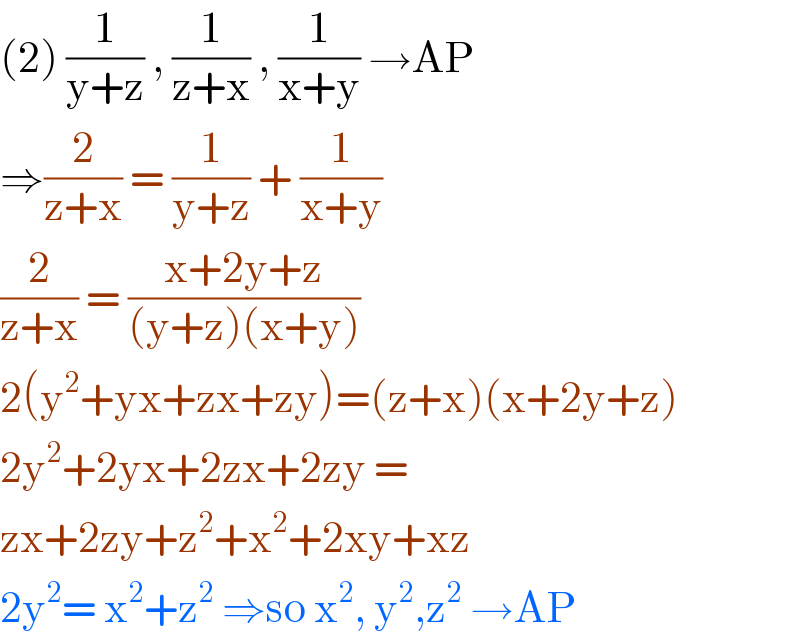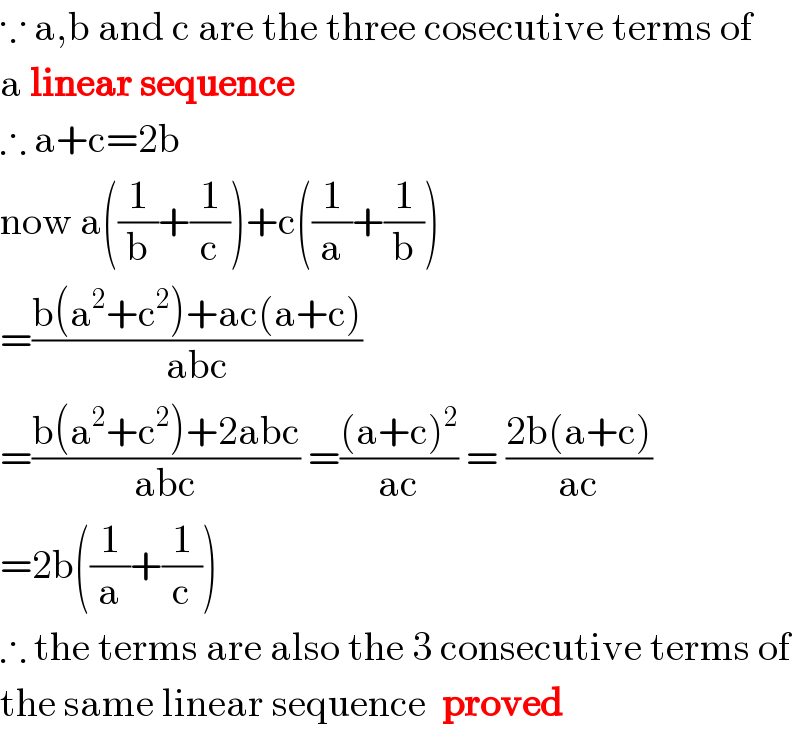
Question and Answers Forum
Question Number 101563 by harckinwunmy last updated on 03/Jul/20

Answered by bramlex last updated on 03/Jul/20

Answered by PRITHWISH SEN 2 last updated on 03/Jul/20

| ||
Question and Answers Forum | ||
Question Number 101563 by harckinwunmy last updated on 03/Jul/20 | ||
 | ||
Answered by bramlex last updated on 03/Jul/20 | ||
 | ||
| ||
Answered by PRITHWISH SEN 2 last updated on 03/Jul/20 | ||
 | ||
| ||